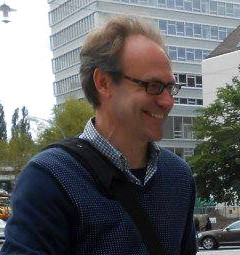
Title: Let’s twist again? – A double life of Graphene
Plenary Talk
Dr. Per Arvid Löthman
Foviatech GmbH, Hamburg, Germany; Kaiserslautern University of Applied Science, Zweibrücken, Germany
Abstract
Electrical phenomena are not limited to the inherent properties of a material but may also arise due to the orientation of the material building blocks. That is the case for the one atom-thin 2D carbon nanomaterial graphene, and possibly for other 2D material as well. By placing one sheet of graphene over another, rotating (“twisting) the other sheet to a special orientation, or ‘magic
angle’, and cooling the ensemble to a fraction of a degree above absolute zero turns graphene into a superconductor. Material properties seem to be orientation dependent on the nanoscale. The twist turns the material first into an insulator and then, into a superconductor. Remarkable is that combining two non-superconducting atomic layers together in a certain orientation turns it into a superconductor which shows he double life or Dr. Jekyl and Mr. Hyde character of graphene.
Those remarkable properties may arise from strong interactions or ‘correlations’ between electrons.
Here we would like to elucidate the ‘double life of graphene as it appears by simple twisting the individual monoatomic sheets of a graphene and exemplary other 2D materials double layer. This field i.e. manipulating electronic properties by a twist is often referred to as “twistronics”.
As the authors also work in a bigger more overarching project concerning 3D graphene and how the 2D graphene properties can be preserved also in the third dimension, the subject of “Twistronics” is relevant also to how, if and why “twisted” single sheet graphene layer may lead to altered properties in 3D graphene geometries. Those important aspects are elucidated.
Biography
Dr. Per A. Löthman obtained his Ph.D. degree from Twente University , The Netherlands in the field of Macroscopic Magnetic Self-assembly and conducted research in Canada, France and Germany on carbon nanotubes, Graphen and related nanomaterials. His research is interdisciplinary and involve BioNanotechnology including DNA, S-layers, Viruses (archaea, bacteriophages), Biomolecular Architecture. Botany and functional surfaces. Dr. Löthman has published over 60 scientifical articles, several book chapters and serves as a reviewer for several journals such as Journal of Bioanalytical and Analytical Chemistry, Journal of Colloid and Interface Science, Thin Solid Films, Sensors and Actuators, Microsystems Technologies, Biophysical Reviews and Letters, He is Senior Research Scientist at Foviatech GmbH in Hamburg, Germany, a young innovative high-tech company in the field of advanced materials and artificial intelligence, and a lecturer in Nanomedicine, Nanopharmacy and Nanomaterials (Kaiserslautern University) and Mechatronics Systems and Design (Hamburg University), Germany.
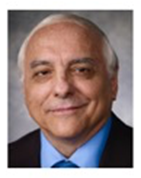
Title: Science and Technology of Unique Multifunctional Ultrananocrystalline Diamond (UNCDTM) Coating for New Generations of Industrial, High-Tech and Implantable Medical Devices/Prostheses
Plenary Talk
Prof. Auciello Orlando
University of Texas-Dallas, USA
Abstract
This Plenary Talk will feature a discussion on the Materials Science/Technologies Development of a unique new paradigm multifunctional material named ultrananocrystalline diamond (UNCDTM) in film (coating) form, and application to new generations of industrial, high-tech, external/implantable medical devices / prostheses, as described below:
UNCDTM films co-developed/patented by Auciello and colleagues are synthesized by microwave plasma chemical vapor deposition and hot filament chemical vapor deposition, using a patented Ar/CH4 gas flow into an air evacuated chamber, where C, CHx (x=1,2,3) species, produced in the plasma or on hot filaments, landing on the substrate surfaces, induce growth of low-cost polycrystalline diamond films with the smallest gran size demonstrated today (3-5 nm). UNCDTM films exhibit a unique combination of physical, mechanical, chemical, electrical, biological properties, namely: 1) hardest coating (98 GPa/similar to diamond gem-hardest material on Earth); 2) highest Young modulus (998 GPa/similar to diamond gem) coating; 3) lowest friction coefficient (0.02-0.04) compared with materials (≥ 0.5) currently used in mechanical pump seals/bearings, prostheses (e.g., dental implants, hips, knees); 4) first electrically conductive diamond coating, via N atoms inserted in grain boundaries, during N-UNCDTM film growth with Ar/CH4/N2; 5) UNCDTM coatings exhibit best biocompatibility because they are made of C atoms (element of life in the human DNA, cells, and molecules); 6) demonstrated as superior scaffolds for embryonic cell growth and differentiation to use cells grown in the lab for treatment of biological conditions.
Technological applications include: 1) UNCDTM-coated pump seals/bearings/AFM tips (marketed by Advanced Diamond Technologies (Auciello/co-founder/2003); 2) High-tech/medical devices, marketed by Original Biomedical Implants (OBI-USA-2013 and OBI-México-2016/Auciello-co-founder), described from less to highest current development, namely: a) UNCD-MEMS cantilevers biosensors and biting heart cells energy generation, powering new generation defibrillator/pacemaker, cell phones and mobile electronics; c) New generation of Li-ion batteries with ≥ 10x longer life/safer, using N-UNCDTM-coated metal electrodes; d) New generation of implantable prostheses (e.g., dental implants (in clinical trials in humans-50 patients received UNCDTM-coated DI in World Class clinic in Querétaro-México since 2018), hips, knees, stents and more) coated with UNCDTM, eliminating failure of current metal implants due to synergistic mechanical wear / blood interaction / chemical corrosion by body fluids; e) UNCD-coated silicon microchip implantable inside the eye as a key component of the artificial retina to return partial vision to people blinded by genetically-induced degeneration of photoreceptors (a device named Argus II is currently in the USA and EU markets by Second Sight, returning partial vision to people blinded by retinitis pigmentosa).
Biography
Auciello graduated with honors: M.S. (1973), Ph.D. (1976) – Physics, Institute “Balseiro”/Universidad Nacional Cuyo-Argentina); EE-Universidad Córdoba-Argentina (1964-1970). Postdoctoral-McMaster University, Canada (1977-1979); Distinguished Research Scientist-University of Toronto-Canada (1979-1984), Associate Professor/North Carolina State University-USA (1984-1988), Distinguished Scientist-Microelectronic Center North Carolina-USA (1988-1996), Distinguished Argonne Fellow (1996-2012)-Argonne National Laboratory-USA. Currently (2012-present), Auciello is Distinguished Endowed Chair Professor-University of Texas-Dallas, Materials Science/Engineering and Bioengineering Departments. Auciello directs basic/applied research on multifunctional oxide [ferroelectric (piezoelectric)/high-K dielectrics films], and nanocarbon films (novel Ultrananocrystalline Diamond (UNCDTM) and graphene films) and applications to industrial, high-tech, and external and implantable medical devices. UNCD film technology is commercialized for industrial products by Advanced Diamond Technologies (Auciello et al.-Founders -2003, profitable-2012, sold to large company for profit-2019), and by Original Biomedical Implants (OBI-USA, 2013) and OBI-México (2016) (Auciello and colleagues /founders), for new generations of superior medical devices/prostheses and other implants. Auciello edited 33 books and published about 500 articles in several fields, holds 23 patents, He was Associate Editor of Applied Physics Letter, and currently of Integrated Ferroelectrics, Functional Diamond, and Coatings. He was President of the Materials Research Society (2013) Auciello is Fellow of AAAS, MRS and IAAM, and has numerous Awards.
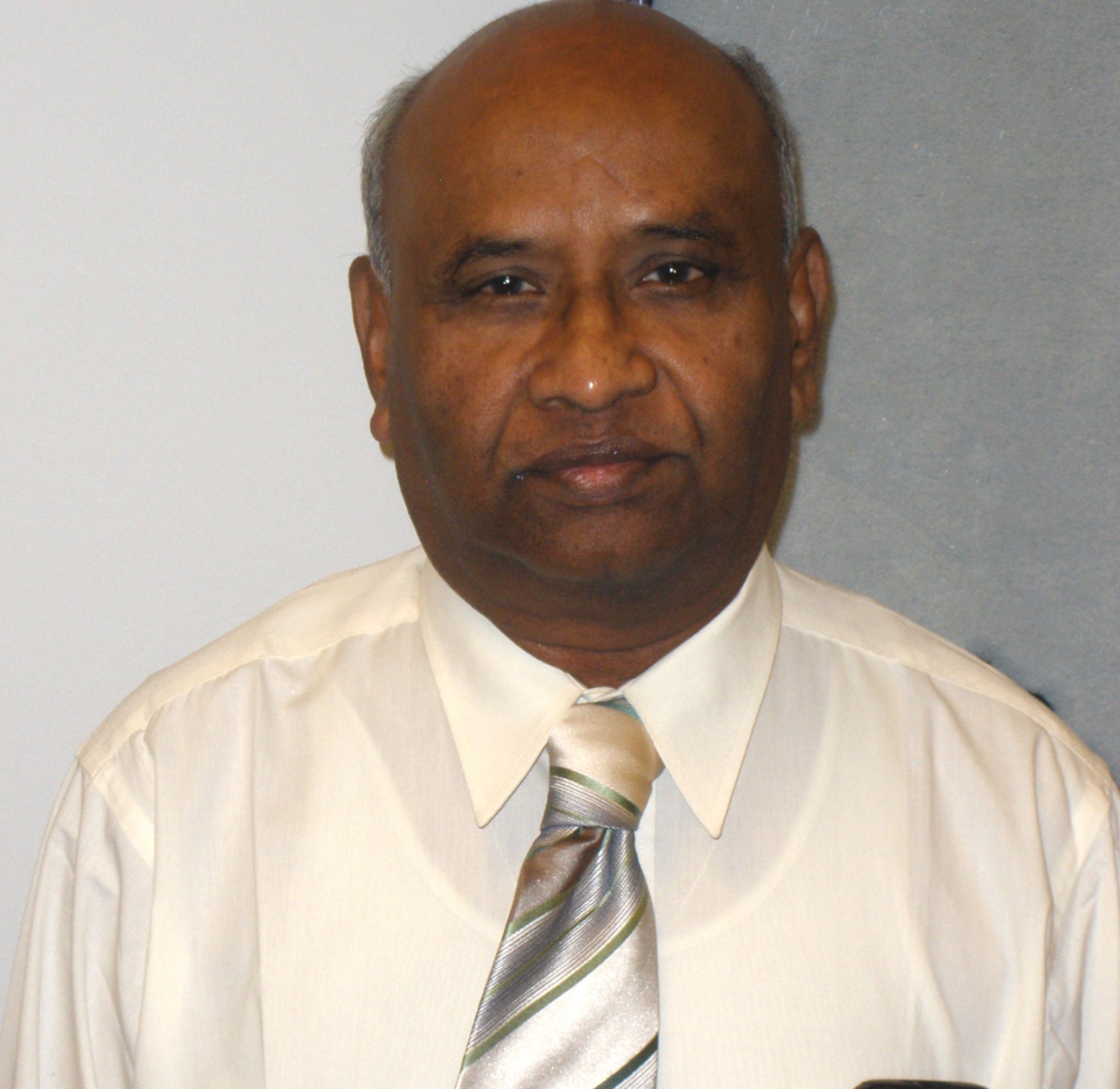
Title: MATERIAL-DRIVEN INNOVATIONS IN FIBER-BASED PERFORMANCE PRODUCTS
Plenary talk
Dr. Radhakrishnaiah Parachuru
Georgia Institute of Technology, Atlanta, USA
Abstract
Fiber-based performance products continue to see many advancements across a range of apparel and non-apparel end-uses, driven by ongoing global research and development activities. Recent innovations not only expanded the range of applications of fiber-based products but also played a crucial role in enhancing the performance, durability, and functionality of the products. Strong and lightweight fibers have revolutionized products designed for aerospace, automotive, and sporting applications due to their exceptional strength-to-weight ratio. Woven and knitted fabrics made with conductive materials such as silver and copper are shaping a huge global industry around smart fabrics and garments. Fabrics built with smartness functionality are drawing the attention of global technology giants such as Google and Microsoft. High performance coatings based on nanomaterials are delivering a new generation of engineered performance products with vastly improved flame retardancy, UV protection, stain resistance, water repellency, wound healing, drug delivery performance etc. A wide range of fiber-reinforced composite materials are rapidly replacing the conventional materials used in aerospace, automobile and construction industries. This presentation is a quick review of ongoing innovations in the design and development of performance-engineered textile products for apparel and non-apparel end uses.
Biography
Dr. Radhakrishnaiah Parachuru is • Completed more than 220 applied research projects for the manufacturers and distributors of fiber and polymer products based in multiple states of the US. • Presented in 190 national and international conferences. • Published 58 research papers in refereed science & engineering journals. • Managed six different characterization labs and three process technology labs for 20 years. Upgraded four characterization labs by adding a new SEM and also X-Ray Diffraction, X-Ray Fluorescence, Spectrometry, Rheology, and Thermal Analysis equipment. • Served as faculty member in-charge of laboratory safety for 12 years (24 labs in 4 different buildings). • Served as expert witness in 48 litigations. Testified in court rooms across eight different states within the US. • Resolved dozens of product/material related disputes through independent testing. • Conducted failure analysis, identified root causes and suggested remedies. • Continue to serve as AATCC expert in textile engineering and statistics areas (this is a paid consultancy role since 2004).
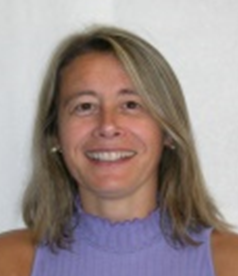
Title: Polymer matrix composite materials for fluorescent optical fibers
Keynote Talk
Prof. Nekane Guarrotxena
Research Scientist at ICTP-CSIC , Spain
Abstract
In recent years, the need for collecting sunlight in an efficient and economical way has become one of the main goals of the photovoltaic-energy research field. Luminescent solar concentrators (LSC) based on doped polymer optical fibers (POFs) appears to be a competent solution since sunlight can be concentrated onto smaller areas of PV cells. Besides, POFs can easily integrate fluorescent dyes with spectral characteristics, especially suitable for solar concentrators. Additionally, a less cost and great availability of the used materials, no need for a sun-tracking system, great flexibility and ease of processing make them highly suitable candidates for the goal. Therefore, this presentation will provide an overview of the fabrication process and of optical properties characterization of our polymer optical fibers and preforms doped with different perylene-derivatives dyes with potential as fluorescent fiber solar concentrators.
The author acknowledges MCIN/AEI/10.13039/501100011033 and the European Union “NextGenerationEU”/PRTR» grant TED2021-129959B-C22.
Biography
Nekane Guarrotxena is Research Scientist at ICTP-CSIC (Spain) and an External Expertise Consultant on I+D+i Management and Policy for National and International Agencies. She was viceDirector of ICTP-CSIC (2001-2005) and visiting professor at UCSB-USA and UCI-USA (2008-2011 and 2019). Her research focuses on the synthesis and assembly of hybrid nano-/materials, smart nanomaterials, nanoplasmonics, fluorescent materials and their nano-biotechnology and green energy applications.

Title: The Perfect Storm Effects on Catastrophic Events
Plenary talk
Mr. Robert O’Shea, Jr., P.E.
Principal Engineer and Sr. Metallurgical Engineer – AMTI
Abstract
When dealing with the normal, everyday, statistical risk evaluation events, the methodologies currently at hand are quite successful for analyzing those jeopardies. When conditions fall into an extreme value type of event, Risk Mitigation become considerably more difficult to properly handle. When faced with a known extreme value event, a qualitative Generalized Extreme Value (GEV) approach is essential to help to avoid a high consequence loss. It is precisely during these extreme value events that most losses of high consequence statistically occur.
Biography
B.S. Metallurgical and Materials Engineering, Illinois Institute of Technology and M.S Material Science and Mechanical Engineering, University of Notre Dame. Over 30 years’ experience in Accident Reconstruction, Code & Standard Compliance Issues, Material Failure Analysis & Metallurgical Testing, Fire Cause and Origin (Commercial and, Residential), Utility Investigations (Gas, Electric and Steam), Gas Turbines and Underwater Structural Inspection Management. Mr. O’Shea founded Applied Materials Technologies, Inc. in 2001. His project management experience includes inspections on hundreds of QA/QC inspections and forensic investigations. He has authored numerous presentations related to failure analysis and engineering investigations and is active in many Technical Societies. Like Dr. Johnson, Mr. O’Shea believes proactive actions prior to incidents are critical in avoiding potential catastrophic events.
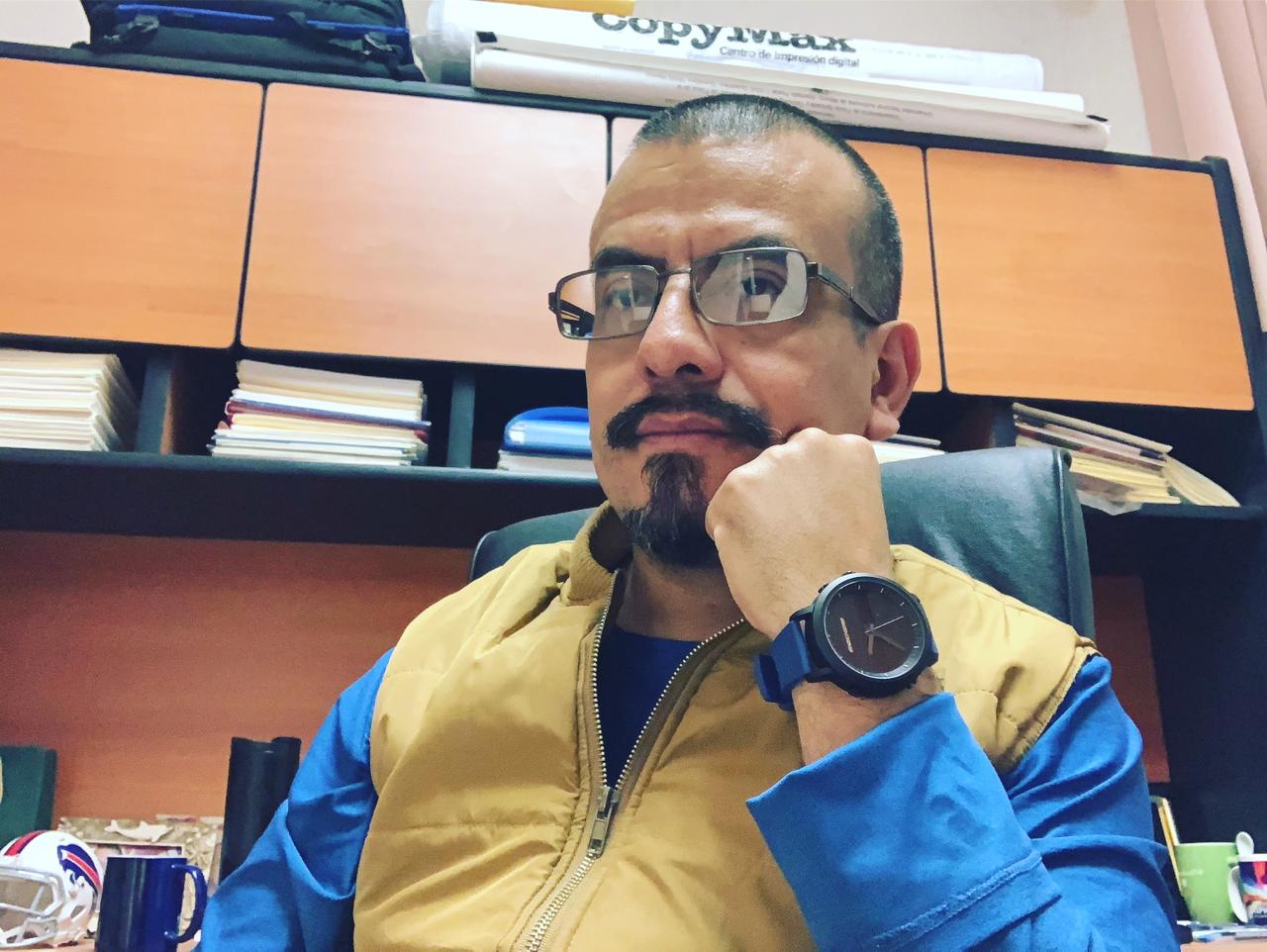
Title: Thermoluminescence features and kinetic parameters of MgO co-doped with lanthanides and Li, obtained by solution combustion synthesis based on different fuels
Keynote Talk
Prof. Victor Orante-Barron
The University of Sonora, Mexico
Abstract
There are only a few reports on luminescence dosimetry for undoped and doped MgO due to the lack of reproducibility for the luminescent signal in thermoluminescence (TL), regardless the synthesis method (i. e. solid state reactions, crystal growth, hydrothermal synthesis, co-precipitation synthesis, and sol-gel) [1]. Moreover, it is reported that introduction of alkaline metal ions into lanthanide-doped MgO enhances the photoluminescence (PL) signal significantly due to compensation charge effects with lanthanide ions [2], [3]. Motivated by the antecedents mentioned above, TL features of MgO co-doped with lanthanides and Li ions, obtained by solution combustion synthesis based on glycine and urea as fuels, are presented in this work. On the other hand, reliable dosimetric studies of any TL material should be based on a good knowledge of its kinetic parameters as well. Thus, kinetic parameters of the phosphors obtained have been calculated.
Biography
Victor R. Orante-Barrón, Ph.D. Associate Professor since february, 2010. Departamento de Investigación en Polímeros y Materiales. Universidad de Sonora. México. Education Ph.D., Materials Science, Universidad de Sonora. México. 2009. M.Sc., Polymers and Materials, Universidad de Sonora. México. 2005. B.Sc., Chemical Sciences, Instituto Tecnológico y de Estudios Superiores de Monterrey, Campus Monterrey (ITESM). México. 1999. Research Fellowships Post-Doctoral Fellowship, in the Radiation Dosimetry Laboratory of Oklahoma State University. From 2009 to 2010. Supervisor: Dr. Eduardo G. Yukihara. Visiting Researcher, in the Department of Physics of University of South Africa (UNISA), from September 4 to December 6, 2015. Awards Member of the National System of Researchers (SNI, in Spanish) of the National Council of Science and Technology (CONACyT, in Spanish). Level 1, since January, 2011. Acknowledgement to Desirable Profile from Program for Professional Teacher Development (PRODEP, in Spanish) of the National Secretary of Public Education. Participation in Conferences 98 presentations of scientific contributions in national and international conferences. Publications 24 articles published in international journals. Organizing Committees Member of organizing committees for three international conferences. Teaching Professor of several courses for undergraduate and graduate students. Human Resources Training Advisor of three B.Sc. theses (two concluded, one in process), five M.Sc theses (four concluded, one in process), and one Ph.D. thesis (in process)

Title: Application of Computational Thermodynamic and CALPHAD in Design and Development of Lightweight Metallic Materials
Invited talk
Mr. Obidimma Ikeh
University of Cincinnati, Ohio, United States
Abstract
The demand for advanced structural materials (Aluminum, magnesium, and titanium alloys) with tailored properties are increasingly being used in the automotive, aerospace and consumer industries for weight reduction, structural efficiency, and mechanical performance under elevated temperature and corrosive environment. These structural alloys are of industrial relevance and their properties are very sensitive to the variation in chemistry, which can be difficult to capture for multicomponent alloys. These properties also strongly depend on the solidification, thermal history, and formation of age-hardened precipitates, of which most are thermodynamically metastable. Experiments and handbook data cannot consider all possible variations in chemistry and processing conditions. Where this data is missing, computational thermodynamic couple with CALPHAD (Calculation of Phase Diagram) has emerged as a powerful tool for accelerating the development of high performing structural alloys, as well as process optimization and better predictions of material behavior throughout the material’s life cycle without costly, time-consuming experiments or estimations based on the limited data available.
Biography
Engr. Obidimma Ikeh (MSc, BSc) studied Metallurgical and Materials Engineering from Enugu State University of Science and Technology and has completed his master’s in mechanical engineering with specialization in Industrial Metallurgy and Corrosion Management from University of Benin, both in Nigeria. With a distinguished academic background, Ikeh has expertise and experience in welding and joining, heat treatment, mechanical behavior of materials, failures mechanisms, alloy development, green and energy sustainable development, casting and solidification, corrosion, and computational materials science. He has published several academic research papers in reputable national and international journals in the field of welding, mechanical and failure analysis of steel material, corrosion science and served as a reviewer in a peer-review international journal. In addition to research and development activities while at University of Benin, he served as an Adjunct Lecturer where he taught, mentored, and supervised postgraduate and undergraduate students. He also gained experience in different industries like the coating industry, oil and gas industry, and construction industry. He is currently a doctoral candidate in the Department of Mechanical and Materials Engineering, University of Cincinnati, Ohio, United States. In his current doctoral journey at the University of Cincinnati, Ikeh is contributing significantly in discovery of novel new Aluminum-Cerium based eutectic alloys for high temperature application using of thermos-calc and pandat simulations softwares, electric resistance furnace and arc melter in analyzing the effect of solidification cooling rates on the eutectic based Aluminum-Cerium alloys and presented his research findings at both national and international conferences, as well as offering mentorship to students. His dedication is evidenced in his preparation of scientific reports and outcome findings using thermos-calc, optical and electron microscope, hardness tester, EDS, and image analysis software. Ikeh's research interests lie in the design, syntheses, optimization, and characterization of the interrelationship between chemistry-process-structure-property and performance of high temperature and service environmental alloys. As a Ph.D. candidate, he has gained extensive hands-on experience with various material evaluation software, contributing to the development of high-performing high temperature alloys. Ikeh is a member of many professional associations such as The American Society of Metals, The American Welding Society and Society of Advanced Materials Processing and Engineering.
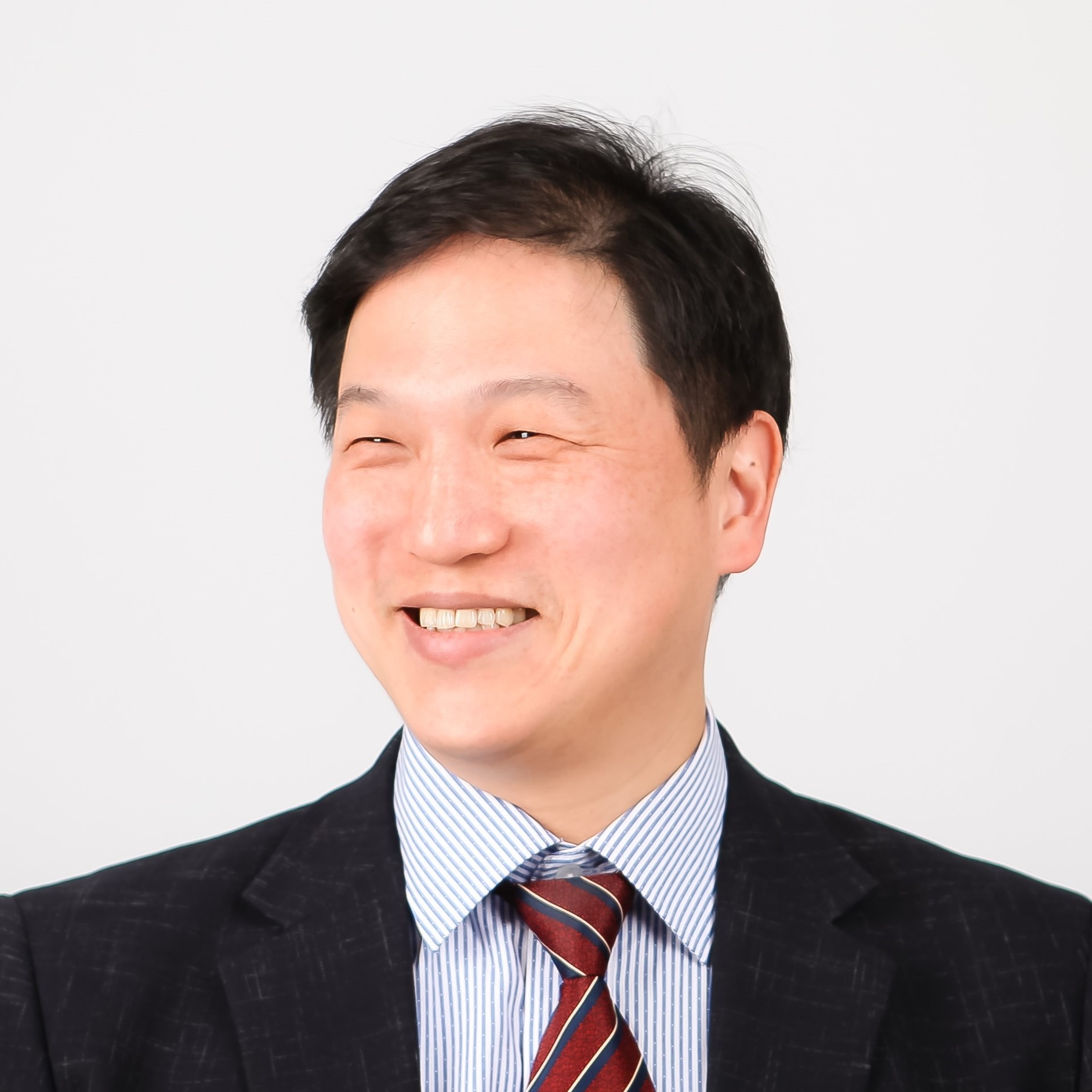
Title: 40 Years of Scanning Probe Microscopy Advances for Material Science
Plenary talk
Dr. Sang-Joon Cho
EVP of Application Technology Center, Park Systems Corp, South Korea
Abstract
Scanning probe microscopy (SPM) is arguably the most versatile and powerful 3rd generation microscopy technology for studying samples at the nanoscale. It is versatile because an SPM can not only image in three-dimensional topography but also provides various types of surface measurements to the needs of scientists and engineers. Among the various developed SPMs, the Atomic Force Microscope (AFM) is the most widely used. The ability to measure forces, as indicated by the deflection of the AFM cantilever, has put it into prominence in surveying various properties of materials. Over the past three decades, AFM has evolved into an ideal methodology for non-destructive sample scanning with longer tip life, higher accuracy, repeatability, and automation. Along the way, various SPM techniques were developed to study the structures and functions of the target sample. In addition to the recent advances in SPM technology, it further expands the SPM application by combining it with other metrological technologies. Through this presentation, I will briefly introduce the 40 years of SPM technology development, contributions to real-life applications, and prospects.
Biography
Sang-Joon Cho, Ph.D. is the director of the R&D Application Technology Center at Park Systems, where he oversees a team of 58 scientists and engineers (23 in Korea and 25 abroad). Additionally, Dr. Cho holds the position of EVP of Sales at Park Systems Corp. His extensive career spans over 20 years, during which he has cultivated diverse expertise in basic biomedical science, applied physics, and instrumentation. Notably, he has been instrumental in the application development of Scanning Probe Microscopy (SPM) for Nano-metrology, particularly in the semiconductor industry, material science, and biomedical research. Dr. Cho actively contributes to the advancement of nanotechnology through participation in various committees. He also serves as the chairman for the field of SPM technology standardization at the International Organization for Standardization (ISO). His significant contributions have earned him various awards and nationally funded research grants. In 2023, Dr. Cho directs three national grants, totaling approximately $20 million, aimed at advancing Atomic Force Microscopy (AFM) technologies and their industrial applications. Notably, in 2021, he was honored with South Korea’s Science and Technology Medal for his outstanding scientific contributions.
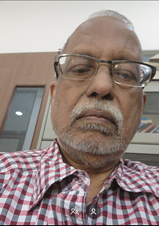
Title: Three dimensional Holey Graphene Electrodes
Plenary talk
Prof. Vinay A Juvekar
Department of Chemical Engineering, Indian Institute of Technology Bombay, India
Abstract
Three dimensional (3D) graphene has as high electrical conductivity, high surface area, and high electrical capacitance, which make them attractive as electrodes for electrochemical cells, capacitive deionizers and electrochemical supercapacitors. However, since graphene sheets act as ion-filters, they hinder diffusion of ions across them. This lacuna limits the thickness of 3D graphene electrodes, thereby reducing their cost effectiveness. By introducing nanometric-size holes in the graphene sheets, it is possible to make the electrodes both thick and with high efficiency for ion transport. Important factors determining the efficiency is size and areal density of holes, and arrangement of holes on sheets. The optimal size and arrangement of holes provide ionic flow paths which produce uniform distribution of ions within the electrode without hindering their transport. In this talk, we discuss various aspects associated with preparation and optimization of 3D holey graphene electrodes for variety of applications. This review is a part of our bigger project concerning how to preserve the properties of 2D graphene during its conversion to 3D graphene.
Biography
Prof. Vinay A. Juvekarv is presently working as Visiting Professor at Department of Chemical Engineering, Indian Institute of Technology Bombay. Completed his Bachelor (1970) and Ph. D, ( 1976) degrees at University of Bombay. Worked as Associate Lecturer/Lecturer at University Department of Chemical Technology during 1971-76. Worked in Chemical Industry during 1977-1984. Working at Indian Institute of Technology Bombay since 1984. He has been technical consultants to several chemical industries. His areas of expertise are Multiphase Reaction Engineering, Colloid and Interfacial Engineering, Soft Materials Engineering and Electrochemical Engineering. He has published more than hundred papers in international journals. He is a Fellow of Indian Academy of Engineering, recipient of Moulton Medal from Institution of Chemical Engineers UK and recipient of Lifetime Achievement Award from Indian Chemical Council. Industrial & Engineering Chemistry Research published a Festschrift issue in his honor in 2019 (IECR vol 58, issue18).

Title: REACH – Chemical Compliance is a Continuous Process
Invited talk
Dr. Renie Harbers
University of Twente, Netherlands
Abstract
REACH or EU regulation 1907/2006 came into force on June 1st, 2007 with a phaced implementtation over the next decades. It repalced a large amount European Directives and Regulation in one single system. This regualtion concerns the Registraion, Evaluation, Authorization and Restriction of Chemicals within the European union. REACH addresses production and use of chemical substances and their (potential) impacts on both human health and environment.
REACH enhances innovation and competitiveness witin the chemicals industry. REACH allows free movement of substances on the EU market. REACH aims to reduce animal testing by means of promoting alternative methods of assessing chemicals. Up to this date REACH it is the most complex legislation with in the EU. REACH is the strictest law up to date in regulating chemical worldwide. Althought it is an European regulation it will affect industries all over the world..
The EU chemicals agency (ECHA) is responsible for the technical, scientific and the adminstration of REACH within EU by the means of data in the form of dossiers from industry and providing guidance and assistance to industry and end-users.
Biography
Renie Harbers (Ir, Ing, MSc, BSc) studied Chemical Engineering at the University of Twente and has completed her Dutch Master of Science at the Department of Material Science and Technology of Polymers under the guidance of Professor J. G. Vancso. She worked over 20 years as a project (R&D) engineer for different highly valued companies like PPG, Royal Philips, SGS, ASML, Siemens, Pentair, TenCate Advanced Composites, Suzlon Ltd and Saint Gobain. She gained experience in different industries like: coatings industry, HighTech industry, Oil Industry, Water Treatment Industry, AirCraft Industry, Renewable Energy Industry and Construction Industry.

Title: FDA Approved Nanotextured Orthopedic Implants in Humans: No Failures, No Infection, No Inflammation, and No Implant Loosening
Plenary talk
Prof. Thomas J. Webster
School of Health Sciences and Biomedical Engineering, Hebei University of Technology, Tianjin, China
Abstract
Nanomedicine is the use of nanomaterials to improve disease prevention, detection, and treatment which has resulted in hundreds of US FDA approved medical products. While nanomedicine has been around for several decades, new technological advances are pushing its boundaries. For example, this presentation will present an over 25 year journey of commercializing nano orthopedic implants now in over 30,000 patients to date showing no signs of failure (over the past 5 years). Current orthopedic implants face a failure rate of 5 – 10% and sometimes as high as 60% for bone cancer patients. Further, Artificial Intelligence (AI) has revolutionized numerous industries to date. However, its use in nanomedicine has remained few and far between. One area that AI has significantly improved nanomedicine is through implantable sensors. This talk will present research in which implantable sensors, using AI, can learn from patient’s response to implants and predict future outcomes. Such implantable sensors not only incorporate AI, but also communicate to a handheld device, and can reverse AI predicted adverse events. Examples will be given in which AI implantable sensors have been used in orthopedics to inhibit implant infection and promote prolonged bone growth. In vitro and in vivo experiments will be provided that demonstrate how AI can be used towards our advantage in nanomedicine, especially implantable sensors. Lastly, this talk will summarize recent advances in nanomedicine to both help human health and save the environment.
Biography
Thomas J. Webster’s (H index: 124; Google Scholar) degrees are in chemical engineering from the University of Pittsburgh (B.S., 1995; USA) and in biomedical engineering from RPI (Ph.D., 2000; USA). He has served as a professor at Purdue (2000-2005), Brown (2005-2012), and Northeastern (2012-2021; serving as Chemical Engineering Department Chair from 2012 - 2019) Universities and has formed over a dozen companies who have numerous FDA approved medical products currently improving human health in over 20,000 patients. His technology is also being used in commercial products to improve sustainability and renewable energy. He is currently helping those companies and serves as a professor at Brown University, Saveetha University, Vellore Institute of Technology, UFPI, and others. Dr. Webster has numerous awards including: 2020, World Top 2% Scientist by Citations (PLOS); 2020, SCOPUS Highly Cited Research (Top 1% Materials Science and Mixed Fields); 2021, Clarivate Top 0.1% Most Influential Researchers (Pharmacology and Toxicology); 2022, Best Materials Science Scientist by Citations (Research.com); and is a fellow of over 8 societies. Prof. Webster is a former President of the U.S. Society For Biomaterials and has over 1,350 publications to his credit with over 55,000 citations. He was recently nominated for the Nobel Prize in Chemistry. Prof. Webster also recently formed a fund to support Nigerian student research opportunities in the U.S.
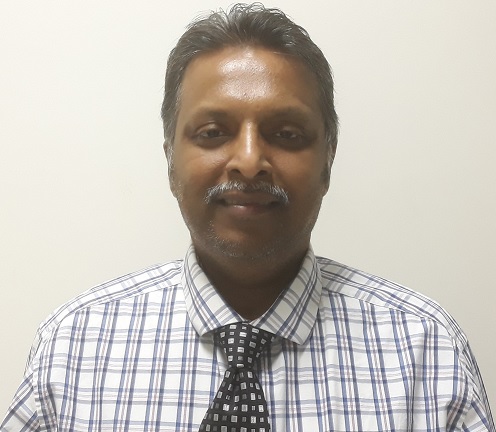
Title: Material Science and its Revolutionary with next generation of concept to Engineering: Present, Past and Beyond
Plenary talk
Dr. Yuvaraja Visagathilagar
Principal Engineer at QinetiQ, Australia
Abstract
Biography
Dr Yuvaraja Visagathilagar, PhD (Australia), BEng(1st Class Hons., Australia), FIEAust, SMIEEE, CPEng, NER RPEV RPEQ, APEC Engineer, IntPE(Aus), IEA, PRINCE2, MOSA, MSESA, MINOSE, LM-MTT, MEDS, MSPIE, MAOS, MANZOS, MAIP, MBCS has over 28 + years of extensive expertise and experience in academia, research, and industry. He graduated with Bachelor of Engineering in Communication Engineering and Doctorate in Engineering (with a highly prestigious scholarship from the Australian Government) in 1996 and 2003 respectively from RMIT University, Melbourne Australia. His dissertation was in “Narrow-band Optical Modulator on Lithium Niobate” for telecommunication applications but it can be applied for other transceivers applications. In research and industry, he has contributed to over 40+ peer-reviewed international journals and conference pubications. He has visited and presented at universities in USA (i.e. UCLA and UCSD), Peregrine Semiconductor Corporation and in Japan (i.e. Science and technology Organisation).He has collaborated with Defence Science Technology Organisation (now DSTG) in Australia where he has contributed in the design, fabrication, packaging and testing of “High-Speed Lithium Niobate Optical Modulator” including documentation of processes for quality certification (ISO 9001) and flip-chip packaging of narrow-band optical modulators on Lithium Niobate and Ceramic materials. He has extensive academic teaching as a lecturer and post-doctorate research fellow in Photonics, Fibre-Optics & System, RF System, and Integration where he was involved in research of novel design of narrow-band optical modulators. In early years, his research has been in Narrow-band Lithium Niobate Modulators but also in finding a solution for packaging of optoelectronic devices (i.e. ceramic and Silicon materials). During the collaboration, he worked with sub-contractors in system integration and packaging of the modulator devices in hermetically sealed packages for defence applications.
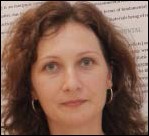
Title: Biomaterials-Based Hydrogels: Recent Advances and Biomedical Applications
Keynote Talk
Dr. Adina Magdalena Musuc
Senior researcher II, Ilie Murgulescu Institute of Physical Chemistry, Romania
Abstract
Hydrogels, owing to their unique properties such as high water content, tunable mechanical characteristics, and biocompatibility, have emerged as versatile biomaterials with promising applications in various fields of biomedicine. A comprehensive overview of recent advancements in biomaterials-based hydrogels, focusing on their synthesis methodologies, characterization techniques, and diverse biomedical applications are presented in this work. The various strategies employed for the synthesis of biomaterials-based hydrogels, including natural polymers, as well as synthetic polymers are discussed. Characterization techniques crucial for assessing the physicochemical properties of hydrogels are comprehensively reviewed. These include swelling behavior analysis, mechanical property evaluation, microstructural characterization using techniques such as scanning electron microscopy (SEM) and atomic force microscopy (AFM), and chemical composition analysis using spectroscopic methods like Fourier-transform infrared spectroscopy (FTIR). Furthermore, the diverse biomedical applications of biomaterials-based hydrogels are highlighted. These include tissue engineering, drug delivery systems, wound healing dressings, and biosensing platforms. Moreover, challenges and future perspectives in the field of biomaterials-based hydrogels are discussed. These include issues related to biocompatibility, degradation kinetics, immune response, and scalability. In conclusion, this work underscores the significant contributions of biomaterials-based hydrogels to the advancement of biomedical research.
Biography
Dr. Adina Magdalena Musuc - Senior researcher II, head of Chemical Kinetics Laboratory has expertise in isothermal and non-isothermal heterogeneous kinetics, thermoreactivity and kinetics of explosive reactions in gaseous and condensed systems, thermoreactivity of some classes of mono- and polycoordination compounds, thermoreactivity of polymers (natural and synthetic), oxide materials design/synthesis, cyclodextrin inclusion complexes, fields of thermal analysis but also in green chemistry science, polysaccharide characterization and functionality, materialized in 68ISI ranked articles,having in all contributions in the field of green chemistry science, pharmacy, biomedical, kinetics, polymers chemistry and thermal analysis, 1 book chapter (Publisher: Nova Science Pub Inc; UK), 3 RO patents, coordinator/collaborator in national/international projects, reviewer for several ISI journal (Journal of Thermal Analysis and Calorimetry, Dalton Transactions, Journal of Material Research, Nanomaterials, etc.).She works as guest editorof ISI journals such as Processes, Fire, and Applied Sciences. Hirsch index (h-index) and the total number of citations, according to Scopus: h-index = 15 and 523 citations. According to Google Scholar h-index = 16 and 630 citations. Her activity and the expertise in the field of thermal analysis has been recognized by the scientific community, being included in the encyclopaedia “Who’s Who in Thermal Analysis and Calorimetry 2014”, Eds. ImreMiklósSzilágyi and GyörgyLiptay, Springer, Budapest 2014, ISBN 978-3-319-09485-4 and awarded with “NicolaeTeclu” prize of the Romanian Academy.

Title: Effect of Metallurgical Fundamentals and Welding Processes on Joining of Dissimilar Steels
Invited talk
Mr. Ozgur Uyar
GSI SLV-TR Welding Technology Testing and Professional Development Center, Turkey
Abstract
The dissimilar materials welding are characterized by number of metallurgical characteristics which do not arise in similar materials welding. Service life of mixed joint strongly depends on manufacturing and operating conditions. In this study, welding of different materials will be investigated in a way that up-hill diffusion processes, hot cracking, dilution percentage, thermal characteristics of the material and welding procedure. Micro analyses of different material’s welding and metallurgical problems will be examined. The result of this study will allow to explain potential joining mechanism for dissimilar steels.
Biography
Özgür Uyar, graduated from Middle East Technical University in Metallurgical and Materials Engineering in 2020. He completed his international welding engineering education in the same year. He has been working at GSI SLV-TR since 2019. Özgür Uyar, who focused on the additive manufacturing of lattice structures as her master's thesis, continues her research in this field. In 2023, he gained the title of International Metal Additive Manufacturing Coordinator within the scope of a pilot project carried out by the European Welding Federation (EWF).
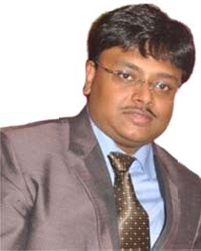
Title: Current research trends on Nanotechnology and Materials Science applications into liquid crystalline optical materials switchable device implementations
Plenary Talk
Prof. Kaushik Pal,Ph.D.;D.Sc.(Malaysia)
Associate Professor-in-Charge and Group Leader’ , UCRD, Chadigarh, Punjab, India
Abstract
The global historic and eminently smart research aspects having to ‘Materials Science Nanotechnology’ attempts on hybrid composite utilization of liquid crystals and graphene to produce value-added chemicals from smart resources as well as improve novel device quality. Dielectric relaxations are studied at three different frequencies of a hydrogen bond liquid crystal chloro benzoic acid with nonyloxy benzoic acid. The process of synthesis is described and the synthesized mesogen is a monophase variant with nematic phase. Carbon-based nanomaterials (CNMs), like CNTs, graphene, carbon dots (Cdots), and some other CNMs, have recently drawn a lot of interest in their future application as an elevated-performance sensor implementation. For the first time in the history of liquid crystal dielectric work, we observed that in the present sample at higher frequency the process mentioned above is reversed. All the dielectric data points obtained at various temperatures when plotted they are found to converge at the ε∞ values and diverge at ε0 values. This process is referred as frequency cross over. Nematic growth order derived from dielectric studies is also presented. We explored that qualitatively different behaviors could emerge via the specific nature of the inter-component interaction. Mastering this mechanism could lead to various applications based on phase tunable properties and novel switching
Biography
Professor (Dr.) Kaushik Pal belongs to an Indian citizen. He currently leads as an ‘Associate Professor-in-Charge and Group Leader’ at University Center for Research and Development (UCRD), Chandigarh University, Punjab (India). He was the former “Distinuish Chair Professor” at Laboratório de Biopolímeros eSensores, Instituto de Macromoléculas, Universidade do Rio de Janeiro, Brazil and Advisory Chair Professor in Liquid Complex System and Solid State Research Laboratory, University of MaribÖr, Slovenia. Most recently, achieved Honorìs Cauśa DOCTOR OF SCIENCE (D.Sc.) award from Ministry of Education, Govt. of Malasia IKTBN Sepang, Selangor in this session June, 2020. He also acts as Distinguish Chair Professor in Wuhan University, Hubei, Republic of China. Before, he worked as a “Visiting Professor” at IIUCN, School of Energy Materials, Mahatma Gandhi University, Kottayam, Kerala. As a full-time “Research Professor” in the Department of Nanotechnology worked at Bharath University (BIHER), Chennai. He completed a Doctorate in Philosophy (Ph.D.) in Physics (Expt. Materials Science and Nanotechnology) from University of Kalyani, Govt. of India. Most significant prestigious awards “Marie-Curie Experienced Researcher (Postdoctoral Fellow)” offered by the European Commission in Greece and “Brain Korea (BK-21) National Research Foundation Visiting Scientist Fellowship” in South Korea achieved in his research career. He was appointed “Senior Postdoctoral Fellow” at Wuhan University, China and within a year achieved a prestigious position “Chief-Scientist & Faculty Fellow” offered by Chinese Academy of Science. His current spans are focusing e.g. Nanofabrication, Chemical nanoeng neering, solid-state condensation chemistry, Renewable green energy revolution, functional Materials hybridization, CNTs/Graphene, Liquid crystalline optical materials, Polymeric nanocomposite, Switchable device modulation, Spectroscopy and electron microscopy, Bio- inspired materials for Nano-biotechnology, Drug delivery, Tissue engineering, Nano-imaging and cell culturing and integration, Flexible and transparent electrodes, Supercapacitor, Optoelectronics, Green nanotechnology and novel biosensor applications. He supervises a significant number of Bachelors, Masters, Ph.D. and Postdoctoral scholar’s thesis in Foreign University collaborations. His outstanding research finding and novelty published around 180- significant research/review articles in SCI & SCOPUS based peer-reviewed international top-tier journals likewise: IOP Nanotechnology, Royal Chemical Society, Elsevier, Springer, InTech, Taylor & Francis, Wiley-Scrivener, IEEE publications got the highest citation in every year and leading editors more than 12-SCI/SCOPUS journal. Throughout his academic experiences, skills and research backgro nd deserve him as an editorial member of Elsevier, Springer, IOPSciences, Wiley, Taylor & Francis, InTech Open, CRC Press etc. as well as edited several 28-Book’s along with Authored and Co-authors chapters and since several last decades reviewed approximate 190-articles and expert editor of Elsevier, Springer, Wiley, IOP journals. Prof. Pal is an expert group leader as well as the associate member in various scientific societies, reorganizations and professional bodies. In past decades, he organized mostly 38-National or International Conferences and workshops leaded as Chairperson/Convener/Co-Convener, Workshops, Summer Internship program, and himself contributed around 36-Plenary, 30-Keynote and 32-Invited lectures worldwide. As per Stanford University SCOPUS database he was selected one of the most leading highly cited researcher n top 2% Scientist in worldwide.
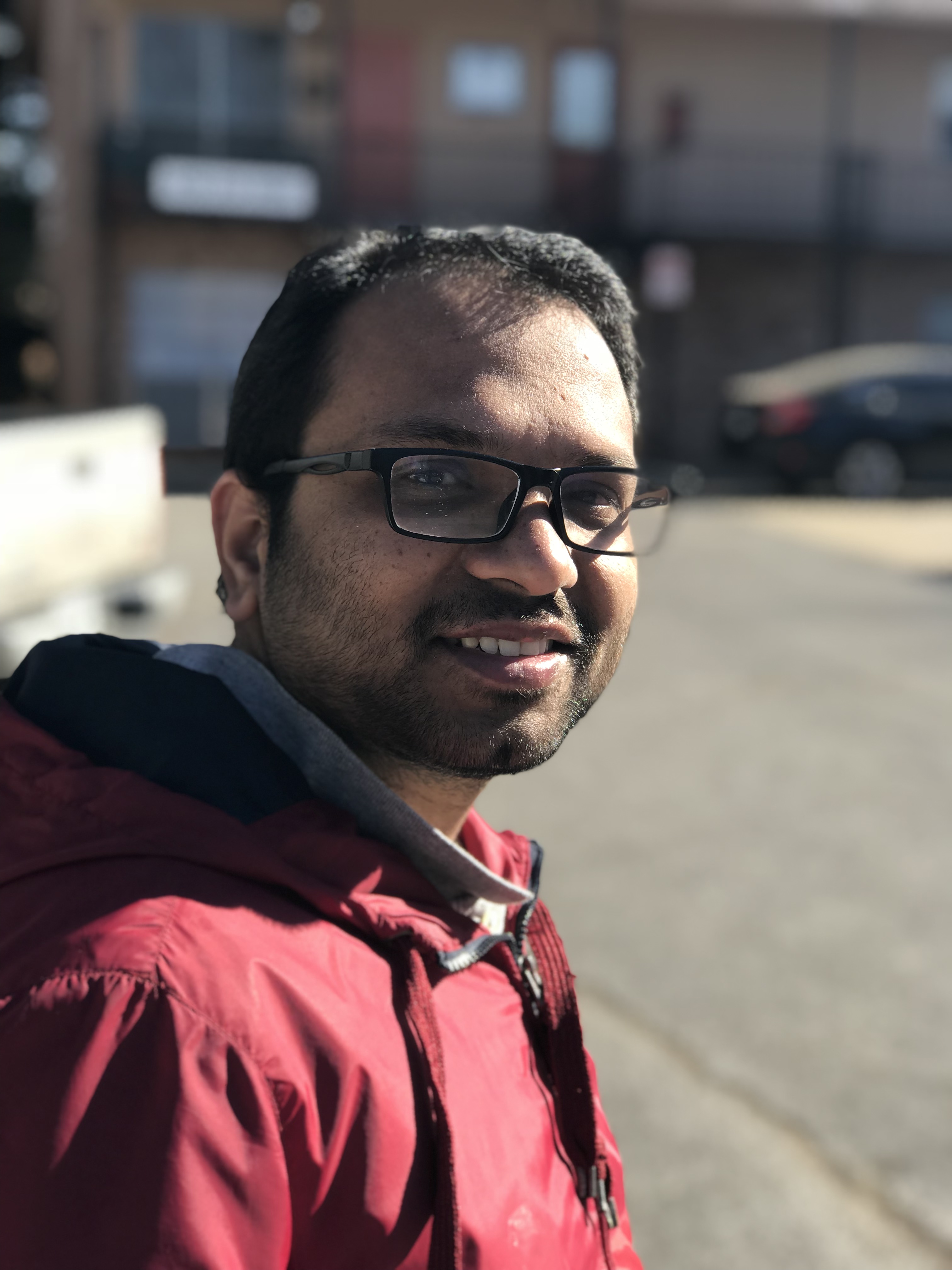
Title: Nanoscale bending properties of bio-inspired Ni-graphene nanocomposites
Keynote Talk
Dr. Raghuram Reddy Santapuram
R&D Engineer, INTEL, USA
Abstract
At the nanoscale, bone consists of a hierarchical structure of mineral crystals (hard material) and collagen (soft material). Inspired by bone’s nanoscale structure and properties, we design a nanocomposite with flexible pristine/polycrystalline graphene embedded in a hard Ni matrix. We model Ni graphene nanocomposites, with different structural arrangements for graphene in the Ni matrix. We use molecular dynamics to investigate the deformation of Ni-graphene nanocomposites under 3-point bending. We find that nanocomposites can deform approximately 30% more than pure Ni. The flexibility of the nanocomposite is optimally enhanced with a distance between graphene sheets greater than or equal to 3.05 nm. Polycrystalline graphene nanocomposites show approximately 15–20% improvement in bending modulus compared to pristine graphene nanocomposites. The increase in bending modulus of polycrystalline graphene nanocomposite is because polycrystalline graphene has higher interfacial shear strength compared to pristine graphene. We also find that the structural arrangement of graphene sheets is more important than increases in their volume fraction in the Ni matrix. These results suggest that graphene sheets scattered in the Ni-matrix is preferable to other structural arrangements. The results from this simulation could help in tuning nanocomposite with desired mechanical properties for various engineering applications.
Biography
Raghuram Reddy Santhapuram has completed his PhD from the Department of Mechanical Engineering, University of Arkansas, USA. He has published research articles in reputed journals in the field of composite materials, tribology/surface science. He has been working as the Test R&D Engineer at INTEL since his graduation and developing a world class facility in testing the INTEL products.
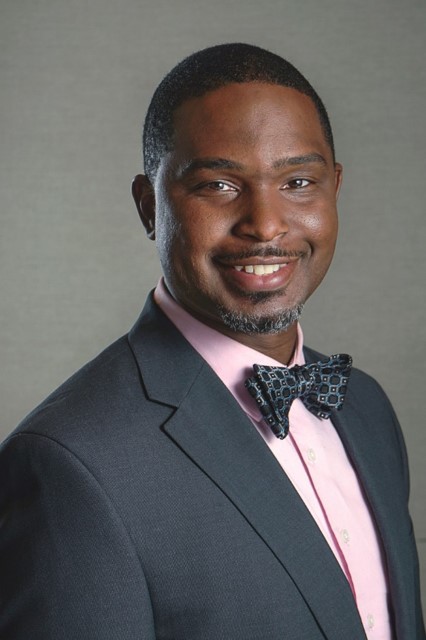
Title: Novel Hepatocellular Cancer Therapy Using Metal Organic Frameworks as Drug Delivery Vehicles
Keynote Talk
Dr. Karl Jackson
Associate Professor of Chemistry, Fulbright U.S. Scholar, Virginia, USA
Abstract
Metal-organic frameworks (MOFs) are porous crystalline materials constructed of organic linkers connected by metal clusters. Biomedical applications of MOFs have become of great interest in recent years due to their high porosity and tailorability to accommodate a wide range of guest molecules. The use of MOFs as drug delivery vehicles in cancer treatment has been widely explored as an alternative to traditional chemotherapeutic routes in efforts to increase efficacy and reduce harmful side effects. In addition to acting as carriers, the surface of MOFs can be decorated with moieties that discriminately bind to cancer cells allowing for advanced targeting capabilities. This presentation explores current work in the evaluation of novel small molecule inhibitor, PDZ1i combinatorial therapies using MOFs as drug delivery vehicles in the treatment of hepatocellular cancer. PDZ1i acts on MDA-9, a pro-metastatic and proangiogenic gene, associated with various types of cancer.
Biography
Dr. Karl Jackson received a B.S. in Chemistry from Virginia State University and a PhD in Inorganic Chemistry from Virginia Commonwealth University (VCU). While at VCU, he engaged in research on the design and synthesis of micro- and nanoporous polymers for clean air and hydrogen storage applications where he was able to publish his work in various peer-reviewed journals. A 2019 Center for the Advancement of STEM Leadership (CASL) Fellow, 2021 NSF Quantitative Computational and Mixed Methodologies (QCM) Scholar, past chair of the Department of Natural Sciences at Virginia Commonwealth University and 2023-2024 Fulbright U.S. Scholar, he currently serves as associate professor of chemistry and special assistant to the dean of the College of Natural and Health Sciences at Virginia State University. His research interests primarily focus on the design and synthesis of metal-organic frameworks (MOFs) for various applications including water purification and targeted drug delivery. As an education researcher, his interests include new approaches STEM learning and undergraduate preparation of underrepresented students for careers in science: theories and interventions.
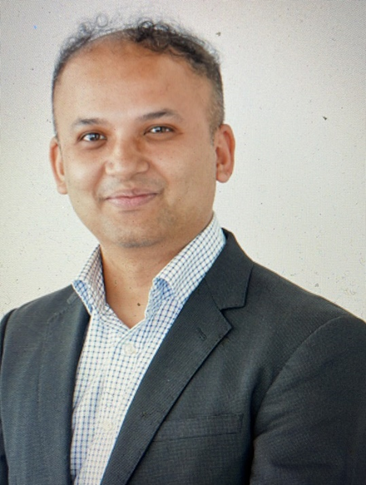
Title: Development of carbon-based functional materials for energy-related device applications
Keynote Talk
Dr. Golap Kalita
Senior researcher at R&D laboratory, Nippon Denko Co. Ltd., Japan
Abstract
Here, we discuss about various two-dimensional (2D) material synthesis process by the chemical vapor deposition (CVD) methods. Single crystal domain and large area monolayer graphene growth by catalytic approach were developed by using the solid precursor based thermal CVD techniques. Similarly, growth of high-quality hexagonal boron nitride (hBN) and monolayer tungsten disulfide (MoS2) layer has been achieved in thermal CVD approach. The synthesized materials can be used for fabrication of heterojunction photovoltaic, photocatalytic devices and energy storage/conversion devices. Further, synthesis of heteroatom doped graphitic carbon nanofibers by the CVD technique was developed for application in catalytic reactions. It was obtained that effective oxygen reduction reaction; oxygen evolution reaction and hydrogen generation reaction can be performed using the developed heteroatom doped graphitic carbon nanofibers as catalysts. Thus, I am going to introduce various novel material systems and their synthesis process for application in the energy-related devices.
Biography
Dr. Golap Kalita is presently senior researcher at R&D laboratory, Nippon Denko Co. Ltd. Japan. Previously, he was chief researcher and vice-director of C's Techno Inc. Japan. Dr. Golap Kalita was awarded JSPS postdoctoral fellowship in 2010. In April, 2012, he joined Center for Fostering Young and Innovative Researchers, Nagoya Institute of Technology, Japan as a Tenure-track Assistant Professor. In July, 2015, he was promoted to Associate Professor at Department of Physical Science and Engineering, Nagoya Institute of Technology. He has authored/co-authored 140 peer-reviewed research papers in refereed international journals. Presented around 223 conference papers in national/international conferences. He is a regular referee of many reputed ACS, RSC, Elsevier, Wiley and Springer, MDPI Journals and acted as reviewer for more than 85 Journals. He has also acted as editorial board member of Scientific Reports of open access journal of Nature and IEEE Open Access Journal on Nanotechnology (IEEE Journal).

Title: APPROACH MACHINES ARCHITECTURE OF EMERGING IN MAGNETISM FOR MATERIALS RECYCLING OF WASTE FOR PRODUCING TEXTILES FIBRES.
Keynote Talk
Prof. ELSAYED AHMED ELNASHAR
Kaferelsheikh University, Egypt
Abstract
The textile industry is one of the polluting industries on the planet. Public awareness has increased manufacturer's responsibility and forced them to shift from linear to the circular production line to reduce the amount of environmental impact and cutting down the use of raw material. Recycling, remanufacturing and reusing are some practices that can be done to minimize the environmental impact and to keep used clothes out of the landfills.
One of these preventive actions is textiles recycling which involves so many uncertainties, such as quality, quantity, and type of the used materials.
In order to meet the needs of the increasing world population, recently, the concepts of sustainability and recycling have gained importance in the textile industry. The rapid change in today's trends has developed disposable habits. Thanks to recycling, it is possible to reuse the waste textile materials that we leave to nature. Due to the increase in agricultural production costs, it has become difficult to obtain the raw materials used for textiles. production with textile waste recycling can be advantageous. Using natural waste fibres instead of natural virgin Fibres to produce home textile products both reduces costs and makes production easier. In this study, recycled (waste) cotton was obtained by shredding white, 100% cotton and blended woven blankets and knitting, duvet covers and sheets purchased from a Governmental and private sectors of hospitals, military clothes , A 50%-50% waste-natural blend was created from the cotton obtained. Blankets fabrics were woven using open-end yarns numbered Ne24 and Ne12 produced from this blend. The physical characteristics of the fabric were investigated. The results obtained were analysed statistically and the effect of the blend created on the fabric quality was comprehensively examined.
And determining the types of magnetic parts while building machines to separate metal parts from old clothes and fabrics as a new approach machines architecture of emerging in magnetism for materials recycling of waste for producing textiles fibres
Biography
ELSAYED AHMED ELNASHAR, Full-Professor of textiles Apparel, Kaferelsheikh University, Egypt. Born in 19 /8/1965. Have Ph.D. 2000, Msc.1995, Bsc.1989, Helwan University. Diploma1985advanced industrial textiles institute. He holds several academic administrative positions: Dean, Vice Dean, Head of Department, He has many textiles patents, Member of international scientific committees. Development of Faculties of Education, commissioned of Supreme Council of Egyptian Universities. Has design books published in Germany. Has published over 185 scientific Articles. Editorial board member & Reviewer for more 65 journal Founder and editor two scientific journals. And Smartex Conference Egypt. Member of the editorial board of several international journals and conferences, He has made many scientific agreements with European &Africa universities
“ Will be updated soon...”
+91 9491 456 452
7-89-1-18, NVR LAYOUT, Madanapalle, Andhra Pradesh 517325, India
About Us
Global Scientific Guild organizes conferences and webinars to promote quality research and real world impact in an atmosphere of true international co-operation between scientists, doctors, professors, practitioners, engineers and industry by bringing together the world class renowned personalities to discuss the latest developments and innovations at one common platform.